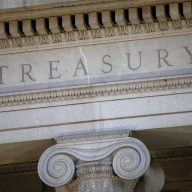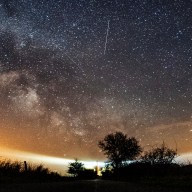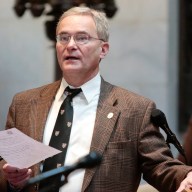MONTREAL – Having a newly minted saint in town isn’t just good news for Montreal’s faithful — it will also likely bring a few hallelujahs from the city’s travel industry.
The canonization of Brother Andre by Pope Benedict on Oct. 17 will not only spur some special events in Montreal but will also have long-lasting effects on the marketing of the city as a religious tourism destination, observers say.
“Once somebody is canonized, that really shoots it through the roof,” says Kevin J. Wright, president of the World Religious Travel Association, which is holding its annual trade show in Montreal in November.
Wright said besides all the media attention Montreal will get because of the canonization, the papal nod to one of its local sons will be an incentive for faith-based tour operators to push Montreal itineraries in their packages.
Two weeks of special events have been planned by the Roman Catholic archdiocese in Montreal to mark the canonization, which will take place at the Vatican in Rome.
An all-night prayer vigil will be held in the Crypt Church of Montreal’s St. Joseph’s Oratory during the night of Oct. 16-17, with the canonization being shown live from Rome on a big-screen TV in the Oratory’s Crypt Church beginning at 4 a.m.
There will be a new exhibit on Brother Andre at the Oratory Museum as well as concerts, masses and a carillon recital on Oct. 17 at the Oratory and Notre-Dame Basilica.
Special events will also be held at the end of the month, capped by an open house at various religious sites in Montreal on Oct. 30-31 and Thanksgiving mass at Olympic Stadium on Oct. 30.
Montreal and the province of Quebec have long been known as a good bet for religious travellers — and those visitors who were less pious.
“This is the first time I was ever in a city where you couldn’t throw a brick without breaking a church window,” remarked U.S. literary icon Mark Twain during a visit to the city decades ago.
However, he wasn’t far off in his evaluation. Some of North America’s most spectacular religious architecture sprang from Quebec’s deep Roman Catholic roots.
Even as the influence of the Catholic Church has waned in the province, Montreal is still dominated by another attraction, the glowing cross atop Mont-Royal.
Religious tourism globally is estimated to be an $18-billion-a-year industry by Wright, whose organization deals with all aspects of the faith-based tourism business.
He describes Montreal as one of the “great destinations,” although he says it isn’t as well known as some others.
“Most of us, when we think of religious travel, especially if we’re from North America, we tend to think of places such as the Middle East, we think of Europe and not so much North America.
“But of all the places in North America, Quebec has a number of shrines, pilgrimage sites, that are actually on a world-class level.”
He cited St. Joseph’s Oratory, which was founded by Brother Andre and which welcomes two million visitors each year.
“That puts them on par with some of the biggest shrines overseas,” he said.
Israel, which Wright said is on target for its best faith-based tourism year ever despite the recession, is expected to get around three million visitors this year.
Other sites such as the shrine at Lourdes in France, Our Lady of Fatima in Portugal and the Vatican in Rome get between three million and six million visitors.
The biggest destination for religious travellers is the Our Lady of Guadaloupe shrine in Mexico, which gets around 15 million to 20 million visitors annually.
Pierre Bellerose, the vice-president of Tourism Montreal, described faith-based tourism as a niche.
“We’re very aware of this niche,” he added, saying that many of its travellers come to Montreal from Canada and the United States as well as Latin America — an area the tourism organization plans to target heavily.
“We see two kinds of tourists,” he said of the religious tourism market in general. “The ones who want to see heritage (sites), I would say are the majority, and the ones who have a more spiritual approach.
“St. Joseph’s Oratory is more for pilgrims and Old Montreal is more cultural,” he added. “They want to see beautiful places and they know that our churches are beautiful. The interior of Notre-Dame is marvellous.”
Notre-Dame Basilica attracts roughly 700,000 visitors per year with its 12-ton bass bell — one of the largest in North America, its thunderous organ and the tens of thousands of gold-plated stars that dot its soaring blue ceiling.
It’s a cornerstone of Montreal life, playing a role in historic occasions ranging from the funerals of former prime minister Pierre Trudeau and hockey legend Maurice (Rocket) Richard to the wedding of pop diva Celine Dion.
While it’s one of the most striking facilities in the city, it’s not alone.
Mary Queen of the World Cathedral, which sits imposingly on Rene-Levesque Boulevard near the downtown shopping core, is a quarter-scale replica of St. Peter’s Basilica in Rome, exact right down to the reproduction of the ornate canopy over the altar.
The Notre-Dame-de-Bon-Secours chapel, known as the sailors’ church, is located in Old Montreal and offers a stunning view of the city’s harbour from its steeple.
A little farther afield, in the city’s Little Italy district, tourists will get a unique sight if they look closely at the mural in the Chiesa della Madonna della Difesa church.
There, they’ll spot one of Montreal’s most famous portraits, depicting Italian dictator Benito Mussolini. It was finished before Il Duce led Italians into the wrong side of the Second World War.
Bellerose acknowledged there has been less emphasis on religious tourism in Montreal in the last 30 years as new attractions such as the city’s burgeoning festival scene took over.
“But I think it’s a good moment, with the celebration of Brother Andre, to remember what we have, for the Montrealer and for the tourist too,” he said.
“We have very interesting things to show to the world.”
———
If You Go…
St. Joseph’s Oratory is located at 3800 Queen Mary Road in Montreal and visitors are asked to make donations for parking and tours. It has a large gift shop.http://www.saint-joseph.org/en_1001_index.php
Notre-Dame Basilica can be found at 110 Notre-Dame Street West in Old Montreal. There is a $5 charge for adults to visit, although people between age seven and 17 get in for $4.http://www.basiliquenddm.org/en/
Notre-Dame-de-Bon-Secours chapel and museum, which is also the site of an archeological dig, is located at 400 Saint Paul St. E. in Old Montreal. Visits to the chapel are free, but entry to the museum costs $8 for adults and $5 for seniors and students. Access to the archeological site is $18 for families and $10 for others and includes access to the museum.http://www.marguerite-bourgeoys.com/
















